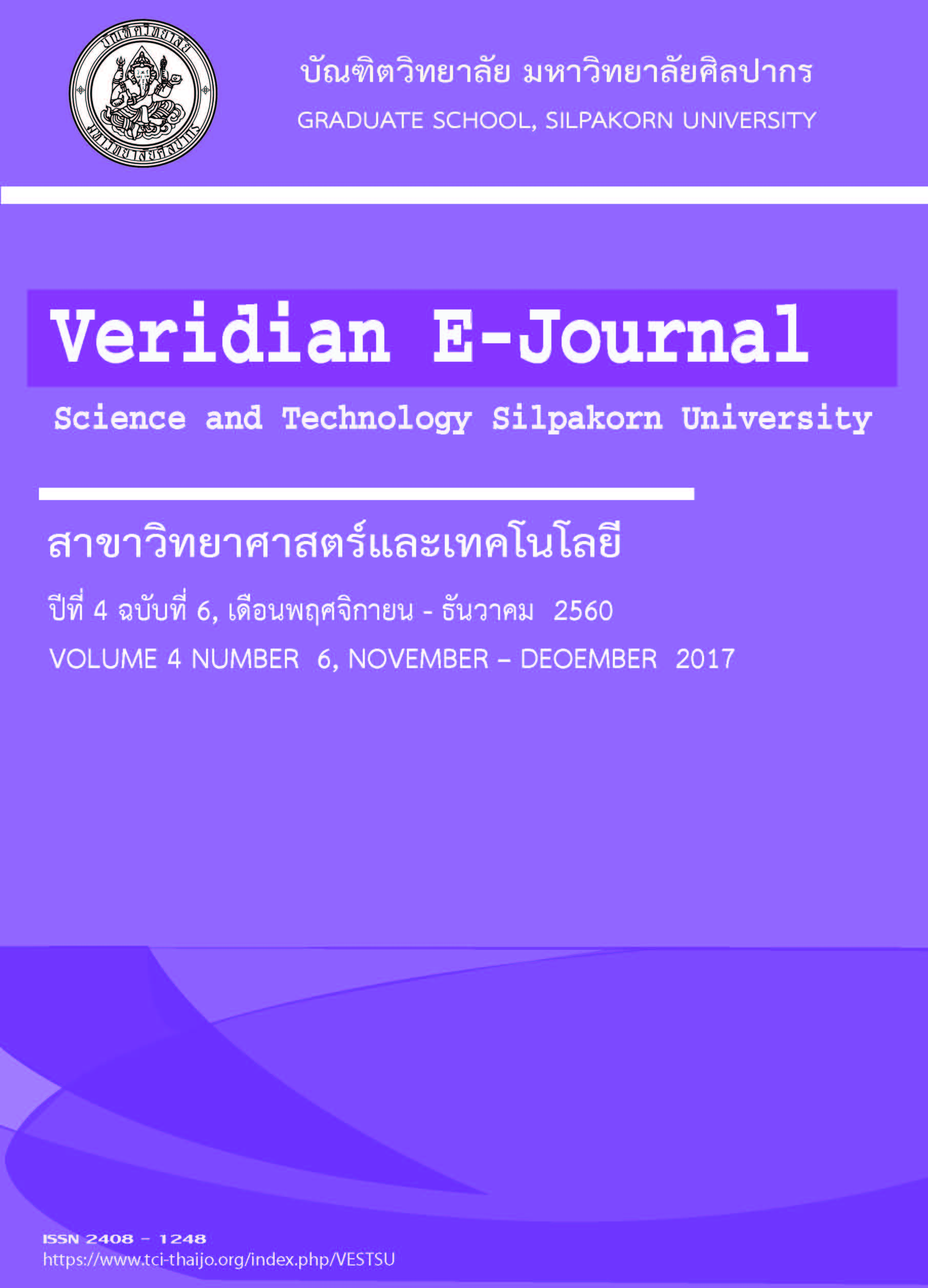การประเมินผลกระทบทางด้านเศรษฐกิจและสังคมของลูกจ้างที่สูญเสียนิ้วมือ มือและแขนต่อค่าทดแทนจากการสูญเสียจากการประกอบอาชีพ (Evaluation of Socio-Economic Impact of the Workers Who Had Occupational Loss Finger, Hand and Arm)
Main Article Content
Abstract
การวิจัยเรื่องการประเมินผลกระทบทางด้านเศรษฐกิจและสังคมของลูกจ้างที่สูญเสียนิ้วมือ มือและแขนต่อค่าทดแทนจากการสูญเสียจากการประกอบอาชีพมีวัตถุประสงค์เพื่อศึกษา 1) ลักษณะชีวิตความเป็น อยู่ สถานะสุขภาพทางกาย จิตใจ เศรษฐกิจและสังคมของลูกจ้างที่สูญเสียนิ้วมือ มือและแขนจากการ ประกอบอาชีพภายหลังจากได้รับการจ่ายค่าทดแทน 2) เพื่อประเมินความสูญเสียทางเศรษฐกิจและสังคมของลูกจ้างที่สูญเสียนิ้วมือ มือและแขนต่อค่าทดแทนจากการสูญเสียจากการประกอบอาชีพภายหลังจากการได้รับการจ่ายค่าทดแทน โดยพิจารณาจากด้านประสิทธิภาพการทำงานของลูกจ้างที่สูญเสียสมรรถภาพของนิ้วมือ มือและแขนจากการทำงานต่ำกว่าคนปกติ ด้านการสูญเสียการยอมรับจากปัจจัยภายนอก ด้านความ สามารถในการสะสมทุนมนุษย์ได้มีน้อยลง และด้านทุนมนุษย์เดิมที่สะสมมาไม่สามารถนำมาใช้ประโยชน์ได้ 3) เพื่อหาตัวแปรที่มีผลต่อการได้รับการจ่ายค่าทดแทนตามประเภทการสูญเสียอวัยวะของลูกจ้าง กลุ่มตัว อย่างที่ศึกษาแบ่งเป็น 6 กลุ่ม ได้แก่กลุ่มลูกจ้างที่ประสบอันตรายจนสูญเสียอวัยวะ 1) นิ้วมือ 2) ง่ามนิ้วมือ 3) มือ 4) ข้อมือ 5) แขนเหนือศอก และ6) แขนใต้ศอก ในจังหวัดระยอง ปทุมธานี สมุทรปราการและสมุทรสาคร รวมประมาณ 300 คน วิธีการศึกษาเป็นการประเมินความสูญเสียทางเศรษฐกิจและสังคมของลูกจ้างที่สูญเสียนิ้วมือ มือและแขนต่อค่าทดแทนจากการสูญเสียจากการประกอบอาชีพ ด้วยการใช้เทคนิคการวิเคราะห์ความแปรปรวน (ANOVA) และตัวแบบถดถอยพหุคูณ (Multiple Linear Regression Model) ของการได้รับการจ่ายค่าทดแทน
ผลการวิจัยลักษณะชีวิตความเป็นอยู่ สถานะสุขภาพทางกาย จิตใจ เศรษฐกิจและสังคมของลูกจ้างที่สูญเสียนิ้วมือ มือและแขนจากการประกอบอาชีพภายหลังจากได้รับการจ่ายค่าทดแทน พบว่าลูกจ้างส่วนใหญ่สามารถช่วยเหลือตนเองได้ดีโดยที่ไม่ต้องมีผู้ดูแลโดยอาศัยอยู่กับครอบครัว และยังคงทำงานที่เดิมต่อไป แต่ลักษณะการทำงานแตกต่างไปจากเดิม นอกจากนี้ยังมีกำลังใจที่ดีสามารถปรับตัวเข้ากับเพื่อนร่วมงานได้ ลูกจ้างส่วนใหญ่เป็นคนต่างจังหวัดจึงพักอาศัยในบ้านเช่า/ห้องเช่ากับสามี/ภรรยา มีคนที่ต้องเลี้ยงดู/ดูแลรับ ผิดชอบซึ่งมักเป็นบิดา/มารดาสามารถปรับตัวเข้ากับครอบครัวได้ ปัญหาอุปสรรคของลูกจ้างในการดำรงชีวิตในปัจจุบันนั้น ส่วนใหญ่ทำงานไม่สะดวก/ทำได้ไม่เต็มที่ ลูกจ้างส่วนใหญ่มีสถานะสุขภาพทางกาย จิตใจ ปัญญาและสังคมค่อนข้างปกติ ดูแลช่วยเหลือตัวเองได้ ยกเว้นแต่ในช่วงเวลาหลังจากประสบอันตรายในตอนแรกจำเป็นต้องมีผู้ดูแลเพราะยังไม่คุ้นเคยต่อการช่วยเหลือตัวเอง ซึ่งต้องอาศัยเวลาในการปรับตัวแต่ลูกจ้างมีความเห็นว่าตนเองมีสถานะทางเศรษฐกิจและสังคมแย่ลงกว่าเดิม เพราะมีข้อจำกัดในการทำงานที่ใช้นิ้วมือหรือมือไม่ถนัดเหมือนเดิม ทำให้สูญเสียโอกาสในการทำงานที่จะหารายได้ให้มากขึ้นหรือได้รับความก้าวหน้าในการทำงาน ซึ่งเป็นความสูญเสียทางเศรษฐกิจและยังมีความรู้สึกว่าตนเองมีปมด้อยและอายเพื่อน ซึ่งเป็นความสูญเสียทางสังคมที่ประเมินค่าไม่ได้ การประเมินความสูญเสียทางเศรษฐกิจและสังคมของลูกจ้างที่สูญ เสียสมรรถภาพของนิ้วมือ มือและแขนจากประกอบอาชีพภายหลังจากการได้รับการจ่ายค่าทดแทนส่วนใหญ่จะขึ้นอยู่กับตัวแปรช่วงอายุลูกจ้าง สถานภาพการสมรสของลูกจ้าง ระดับการศึกษาของลูกจ้างและอวัยวะที่สูญเสียสมรรถภาพการทำงานของลูกจ้าง นั้นคือการได้รับการจ่ายค่าทดแทนตามประเภทการสูญเสียอวัยวะของลูกจ้าง มีความสัมพันธ์กับอวัยวะที่ได้รับการสูญเสียสมรรถภาพของลูกจ้างจากการประกอบอาชีพ และอายุของลูกจ้าง ซึ่งจะได้สมการถดถอยพหุคุณของตัวแปรที่มีผลต่อการได้รับการจ่ายค่าทดแทนตามประเภทการสูญเสียอวัยวะของลูกจ้างคือSOS=190704.10+39379.054PHY-4337.689 AGE
The purpose of this research is the evaluation of socio-economic impact of the workers who had occupational loss finger, hand and arm of compensation aimed to examine: 1) study lifestyle characteristics of the workers who had occupational loss finger, hand and arm after receiving compensation; 2) study socio-economic status of the workers who had occupational loss finger, hand and arm after receiving compensation; 3) assess socio-economic loss of the workers who had occupational loss of finger, hand and arm after receiving compensation. 4) The variables that affect the compensation base on the worker’s organ. The sample was consisted of 6 groups in area Rayong, Puthumthani, Samutpakran and Samutsakon involving 300 workers. Methodology of research is the evaluation of socio-economic impact of the workers who had occupational loss finger, hand and arm of compensation by using Analysis of Variance (ANOVA) and Multiple Linear Regression Model for occupational loss.
The findings were as follows: study lifestyle characteristics of the workers who had occupational loss finger, hand and arm after receiving compensation; Most workers were able to perform their routine activities without the attendants’ assistance. These workers have still lived with their family and worked in the same enterprise, but performing different duties. Moreover, these workers still have strong mind and were able to adapt to their colleagues. They stayed in rented homes or rented rooms with their husband or wife. These workers had their own responsible members who were their parents. Most of the workers could adapt to their families. Most problems/obstacles in their current living were inconvenient and inefficient working. Next, most workers had somewhat normal physical, mental, spiritual and social health status. They were able to help themselves without the attendants’ assistance apart from the time after the accidents when the workers had just lost their finger or hand. They were not be able to familiarize to their self-assistance which they needed time for adaptation. Followed this, the workers agreed that they had worse socio-economic status because of their work limitation of using finger or hand not as usual. These workers had lost their promising work opportunity for earning more income or work promotion which were their socio-economic loss. Moreover, the workers had accepted that they had inferiority complex and shyness of their imperfect body among their colleagues which were undetermined social loss. The independent variables affected by the evaluation of socio-economic impact of the workers who had occupational loss finger, hand and arm; were associated with the loss of the worker’s organ, and age. This is the compensation which is associated with the loss of the worker’s organ, and age. Variables that affect the compensation base on the worker’s organ are: SOS=190704.10+39379.054PHY- 4337.689 AGE

